Post War Literature overview
Primo de Rivera's dictatorship, the Spanish Civil War and Franco's dictatorship plunged Spain in a state of desolation caused by injustices, censorship and general unhappiness towards the new regime. The consequences of this are still felt in modern day Spain, but literature managed to find its way, and although there's not a specific movement that characterizes it, the production has increased substantially.
Spanish Literature in the Post War Period
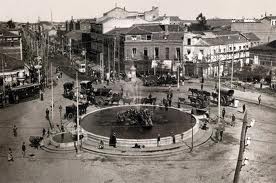
The Spanish Civil War was a very important event in Spain, and it brought with it many changes. The literary production had been at it's peak because the war broke out, but after it it was pretty scarce, most of all because of the terrible censorship the authors had to endure. In Spanish schools, this event is used to divide the literature in two different periods: one before the war, and one after.
Spanish Literature in the Post War Period - Prose
The novels written in the years directly after the Spanish Civil War show a total dependence in the trends that had been popular during the first half of the century. The multiple exiles, the repression and the censorship configure a precarious panorama, made worse by the intellectual impoverishment of the country.
In the shadow of the official culture, the youth of the new order and some older writers that had accommodated to the change come to the fore. This explains the conformism of a scarce novelistic production in the Spanish post war literature, and the between testimonial and pamphleteering.
Next to these "winners novels" there's another movement, Neo-Romanticism, which like its own name indicates takes after the Romantics. A third movement evokes the Realists, but the caution of looking too closely at the present makes them turn their eyes to the past.
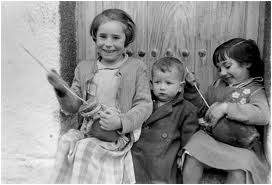
The 50's bring the so called "Social Realism" to the Spanish post war literature, with the aim of exposing the unjust situations that were so common during Franco's dictatorship through memories of the past war. This tendency revives the traditional Realism from contemporary foreign stimuli, like the Neo-Realist cinema, and the American and Italian novel.
"Tiempo de silencio" (1962) by Luis Martin Santos marks a a considerable evolution in the post war narrative, based in the distant treatment of the social critique, using a linguistic and technical display that pushes the creation of a novel towards a richer and innovative horizon.
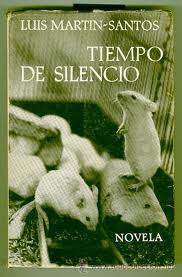
During the 60's there's a finally closure with the post war period. There are new economic, social and political changes that give a bigger freedom to the writers, and this freedom gives way to an experimentation of the narrative, from which works like "Volverás a Región" by Juan Benet or "Don Juan" by Gonzalo Torrent Ballester emerge.
Narrative in Spanish post war literature after 1975 (the year Franco died in Madrid) begins to increase until our days. The large number of novels, stories, short stories, translations from foreign authors, magazines, newspapers, etc, make the literary panorama quite confusing. There aren't common characteristics to the narrative, only some points of reference. The lack of universal criteria is in fact one of the things that define the new narrative.
As for the language, there's an affectation of the prose that reveals the sensitivity and the cultural preparation the young narrators have, as well as their efforts to create a good personal style for themselves. The structure is much lighter, varied and dynamic, as a consequence of the experimentation during the 60's, and it also uses simple forms close to the traditional ones.
Spanish Literature in the Post War Period - Poetry
The centenary of the death of Garcilaso de la Vega in 1936 signifies a change in the poetry trends in the Spanish post war literature, and the new one is called "garcilasismo": a poetic movement that through the influence of the Spanish poet of the 16th century recovers the more classic forms of poetry, like the sonnet, and excuses the fascist themes baed on Love, God or the Empire, concepts which clash with the reality in Spain.
In 1944 Dámaso Alonso's "Hijos de la ira" opens the way to the manifestation of what still can't be said honestly, but there are exceptions to this Realist and Existentialist surge:
- The Postism vanguard, which recovers the liking for lyrical games.
- Prolongation of the explicit Surrealism, remembered from previous generations.
- The group of the "Cántico" magazine, in Córdoba, where there's a claim for the South and the Beauty, reminiscent of the Modernism, as well as the recovery of the sensual images of Cernuda's poetry.
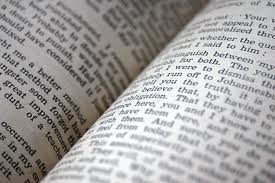
The 50s bring with them the boom of social poetry, which delves in the aesthetic of the Realists with a markedly left-winged political view. Poetry is regarded as a tool to change the world and for communication. The "Poets of the 50s" as they're called, develop most of their works during the 60s, but their first tentative steps are taken in this social Realism.
Castellet published in 1970 "Nueve novísimos poetas españoles", which meant the birth of a new promotion of writers of the Spanish post war literature (most of then established around Madrid, the cultural capital), and above all, of a new aesthetic. The poets of the 80s have tried to create without the influence of schools, rules, or trends. They feel a deep respect for the long literary tradition, from the classics to the poets of the 50s.
In these poets of the 80s, emotions predominate over reason; the worries of the human beings come to the fore. They prefer experiences to imagination, and there's also a liking towards what's called "silence poetry", which is minimalist and concrete; anything that encumbers communication is eliminated.
Spanish Literature in the Post War Period - Theatre
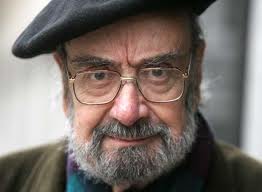
The existential anguish and the social concerns are very relevant topics in the post war theatre. Antonio Buero Vallejo and Alfonso Sastre influence the development of a Realist and social theatre during the 50s and 60s, which has the aim of revealing the injustices and contradictions of the Spanish society. They also cultivate the historical theatre, establishing parallelisms between the present situation and the past.
During the 70s there's a development in the experimental and avant-garde theatre in the Spanish post war literature, but there's also an increase in independent groups like Els Joglars, Els Comediants, Dagoll Dagom, La Cuadra, Teatro Libre, etc. that search for their own peculiar and unique line of work.
The awaited theatrical flourishment never happened, and the plays released during this time weren't of much interest to the people, which found better entertainment in the cinema and other ways of communication.

